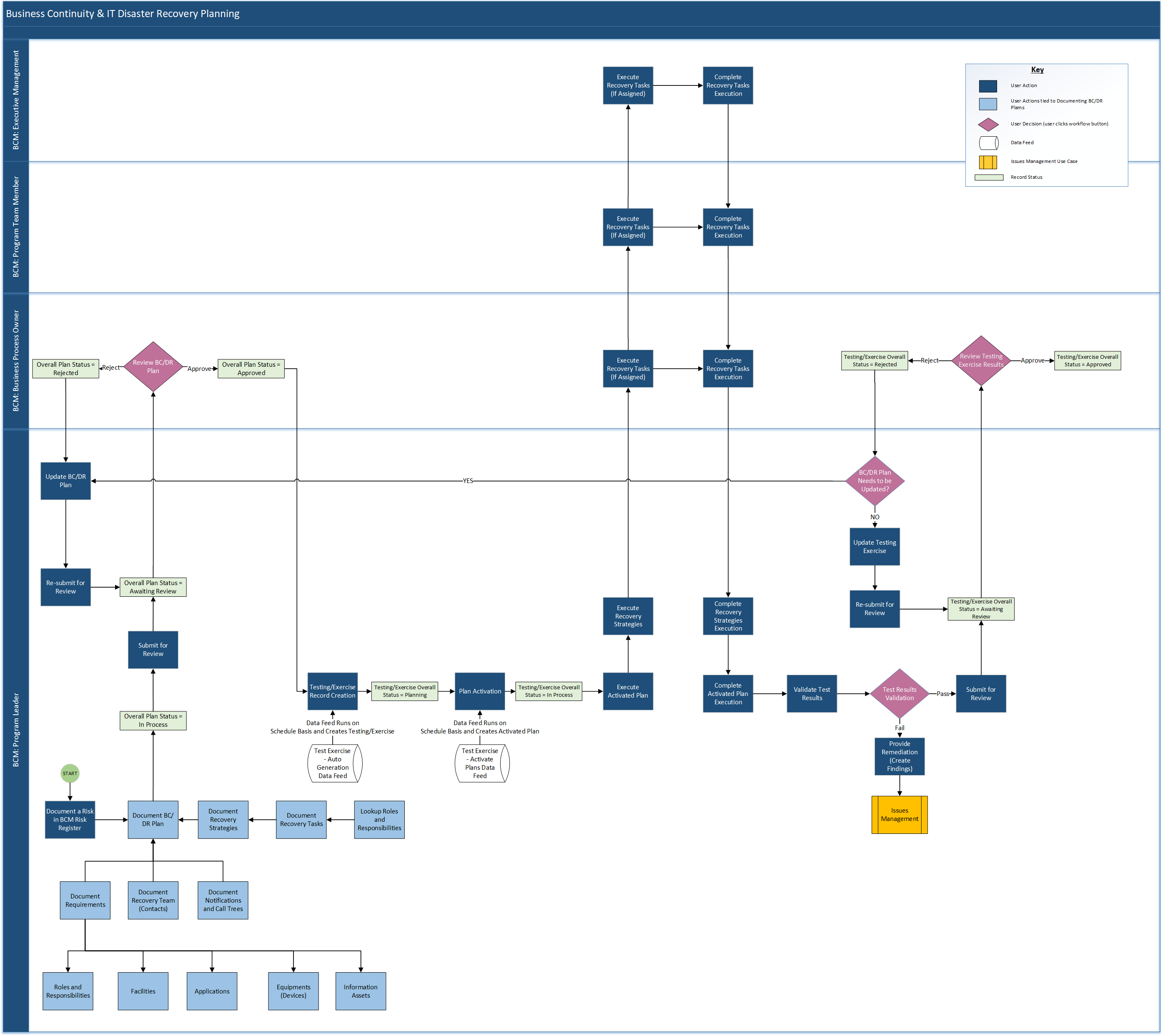On this page
Process Diagram
The following diagram illustrates the overall process enabled by Archer Business Continuity & IT Disaster Recovery Planning.

Creating a Business Continuity or IT Disaster Recovery Plan
Business continuity (BC) plans are the detailed business process recovery plans that give an organization the step-by-step blueprint to recover a business process, facility, function, or department subsequent to a disruption. IT Disaster recovery (DR) plans are detailed recovery plans that give an organization the step-by-step road map to recover a data center, technology device, infrastructure, or application subsequent to a disruption. You can also create crisis response plans that the crisis team can use during an event to manage the disruption until it is closed.
To create a BC or DR plan, provide the applicable details for each plan, including plan information, review and approval information, recovery strategies, backlog tasks, contacts, requirements, and testing frequency. After the Business Continuity or Disaster Recovery plan has been drafted, recovery strategies documented, and recovery tasks outlined, the assigned reviewer should review and approve or reject the proposed plan. After a Business Continuity or Disaster Recovery plan is activated, associated tasks and strategies are distributed to employees as defined in the plan. As each strategy is run and task completed, the individual records must be updated to reflect the changes.
Documenting Roles and Responsibilities
Documenting roles and responsibilities allows you to assign users certain jobs or titles for business continuity or disaster recovery plans. These assignments are typically provided by the Business Resiliency Director or Manager. Associating roles with Business Continuity or Disaster Recovery plans instead of individuals helps ensure consistency and accuracy of the plans if individuals associated with specific roles change positions frequently. If the role is critical, such as a key participant in a highly critical process, it can be designated by Role Type. These roles are also used to help create call trees to ensure effective communication between colleagues during a disaster.
The Notifications and Call Trees application provides a template for creating notifications and communicating information during an event. This application is used to document the notification, track the call tree (initiator and recipients), and associate the notification to BC or DR plans and Crisis Events.
Testing your Business Continuity or Disaster Recovery Plan
You can test your plans, remediate issues that are discovered as part of a test, and submit the test results for review. A test exercise incorporates an expectation of a pass or fail element within the goal or objectives of the exercise being planned. A test is run when business continuity or disaster recovery plans are activated through a Testing/Exercise record. You can also use the automated test process provided by Archer to plan for your next plan test date.


